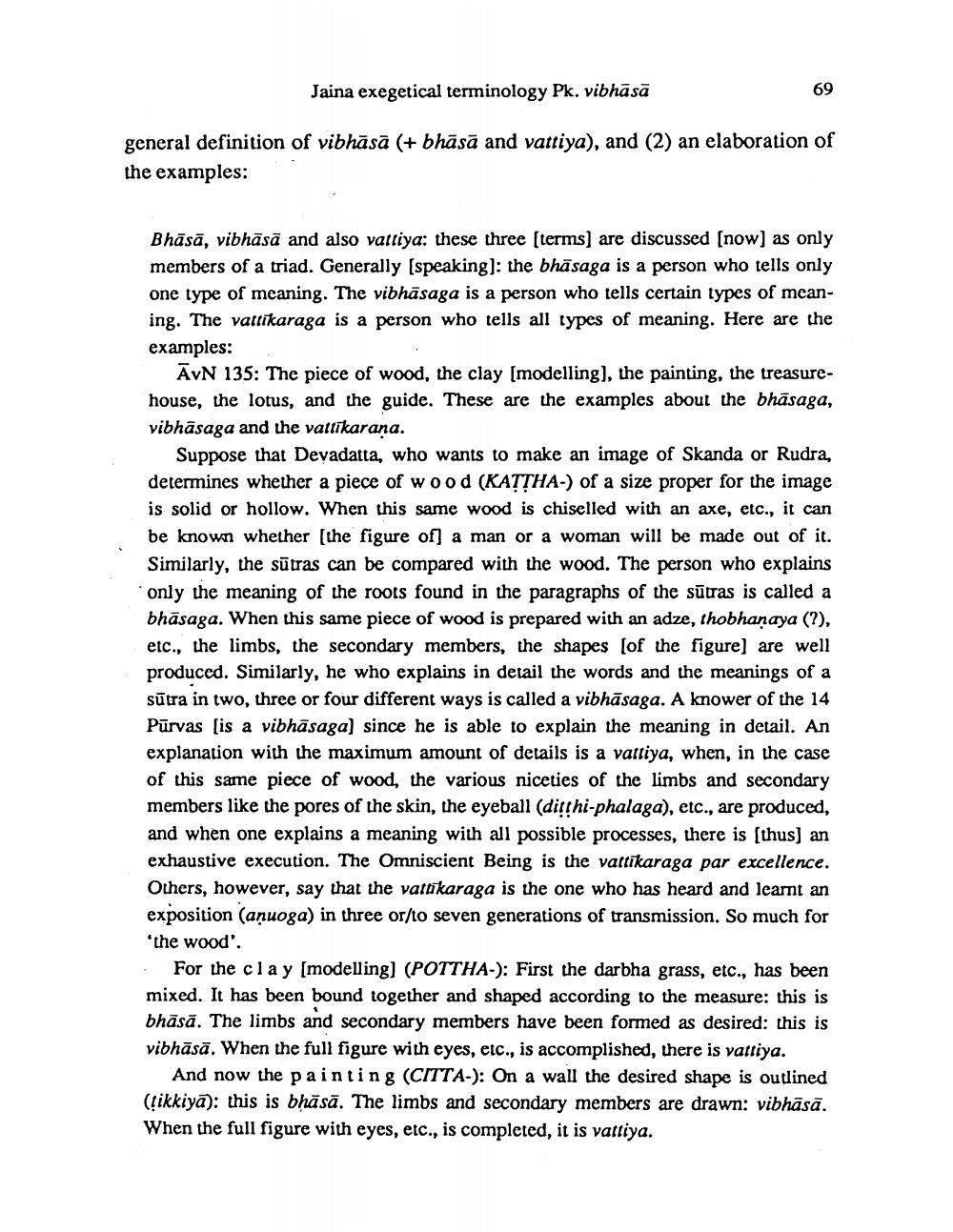Book Title: Jaina Exegetical Terminology Pk Vibhasa Detailed Exposition Author(s): Nalini Balbir Publisher: Nalini Balbir View full book textPage 3
________________ Jaina exegetical terminology Pk. vibhāsā general definition of vibhāsā (+ bhāsā and vattiya), and (2) an elaboration of the examples: 69 Bhäsä, vibhāsā and also vattiya: these three [terms] are discussed [now] as only members of a triad. Generally [speaking]: the bhāsaga is a person who tells only one type of meaning. The vibhāsaga is a person who tells certain types of meaning. The vatukaraga is a person who tells all types of meaning. Here are the examples: AVN 135: The piece of wood, the clay [modelling], the painting, the treasurehouse, the lotus, and the guide. These are the examples about the bhāsaga, vibhāsaga and the vallikarana. Suppose that Devadatta, who wants to make an image of Skanda or Rudra, determines whether a piece of wood (KATTHA-) of a size proper for the image is solid or hollow. When this same wood is chiselled with an axe, etc., it can be known whether [the figure of] a man or a woman will be made out of it. Similarly, the sutras can be compared with the wood. The person who explains only the meaning of the roots found in the paragraphs of the sūtras is called a bhāsaga. When this same piece of wood is prepared with an adze, thobhanaya (?), etc., the limbs, the secondary members, the shapes [of the figure] are well produced. Similarly, he who explains in detail the words and the meanings of a sūtra in two, three or four different ways is called a vibhāsaga. A knower of the 14 Purvas [is a vibhāsaga] since he is able to explain the meaning in detail. An explanation with the maximum amount of details is a vattiya, when, in the case of this same piece of wood, the various niceties of the limbs and secondary members like the pores of the skin, the eyeball (ditthi-phalaga), etc., are produced, and when one explains a meaning with all possible processes, there is [thus] an exhaustive execution. The Omniscient Being is the vattikaraga par excellence. Others, however, say that the vattikaraga is the one who has heard and learnt an exposition (anuoga) in three or/to seven generations of transmission. So much for 'the wood'. For the clay [modelling] (POTTHA-): First the darbha grass, etc., has been mixed. It has been bound together and shaped according to the measure: this is bhāsā. The limbs and secondary members have been formed as desired: this is vibhāsā. When the full figure with eyes, etc., is accomplished, there is vattiya. And now the painting (CITTA-): On a wall the desired shape is outlined (tikkiya): this is bhäsä. The limbs and secondary members are drawn: vibhäsä. When the full figure with eyes, etc., is completed, it is vattiya.Page Navigation
1 2 3 4 5 6 7 8 9 10 11 12 13 14 15 16 17 18
